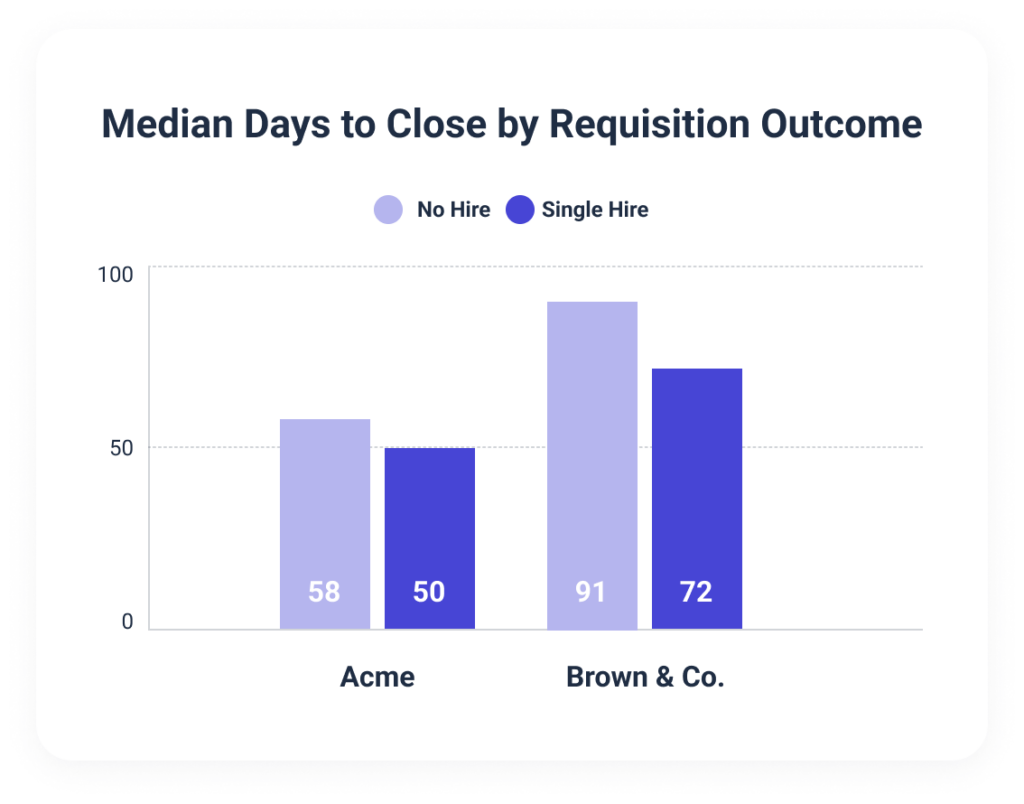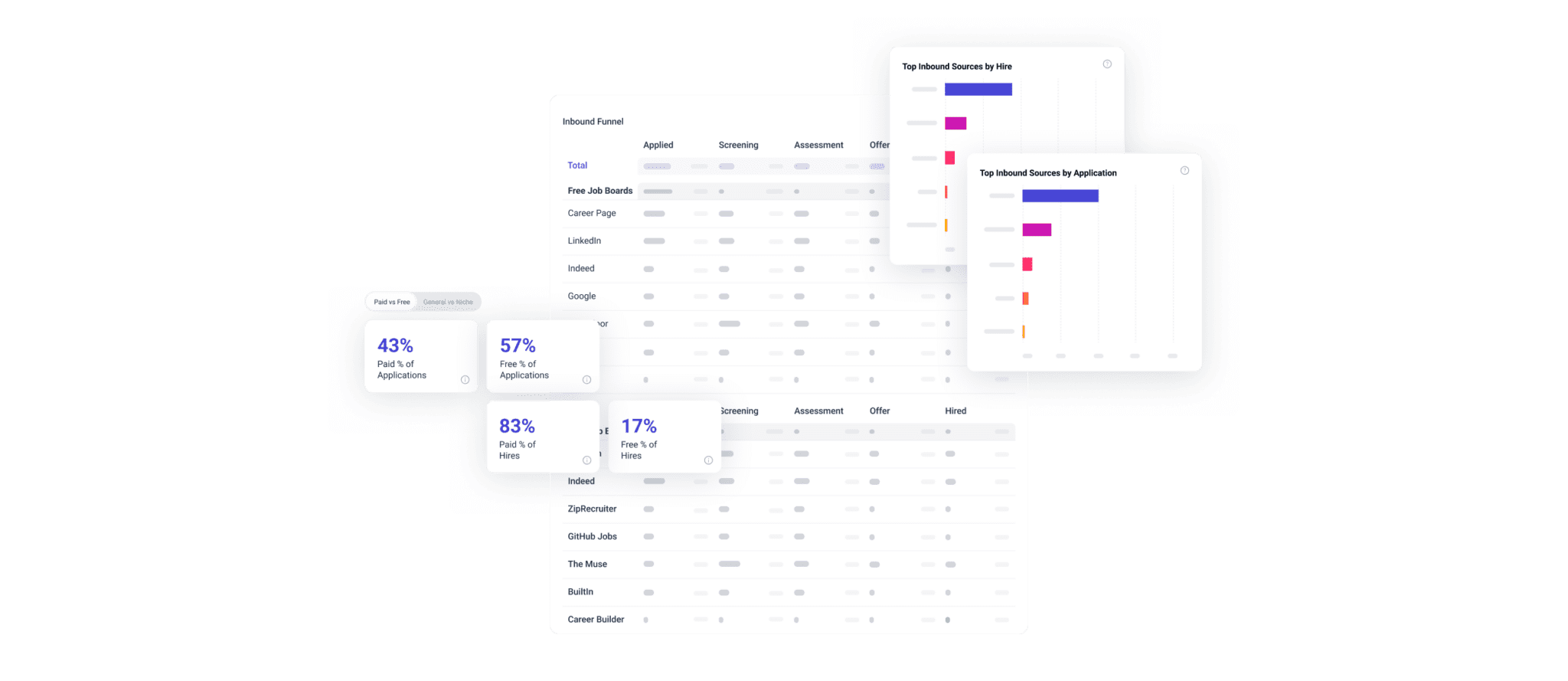Seemingly overnight, we’ve flip-flopped from a historically tight labor market to tightened recruiting budgets and head counts. And while it’s crucial to maximize recruiter capacity and sourcing spend, talent teams are – often unknowingly – wasting resources on (a shocking number of) job requisitions that never result in hires. However, no-hire requisitions offer important recruiting intelligence.
Datapeople analyzed over 126,000 job posts active in 2021 and 2022 and their hiring outcomes, representing 99 companies. We found the prevalence of no-hire requisitions notable: on average, 31% of jobs did not result in a hire. These are jobs that went through a complete requisition process, attracting at least some applicants. (We excluded job posts that were not external-facing – or those that did not get syndicated to a job board.)
In other words, 1 in 3 job reqs is unsuccessful – despite consuming valuable resources from recruiting and hiring teams already stretched thin.
Why isn’t such a worrying stat sounding more alarms among recruiting industry thought leaders? For starters, it may be because no-hire jobs don’t fit neatly into the way talent teams measure performance today.
Incorporate no-hire requisitions in your metrics
Many teams discard no-hire cases from time-to-close analyses because they tend to perform dramatically differently than requisitions that do end up with a hire (or more than one).
In data analysis, it’s best practice to consider “third-party influences” that could impact key performance metrics. Because they can cloud the image of what is truly happening and obscure the insights used to inform strategy.
But when it comes to measuring time to close, completely removing no-hire cases – again, a whopping third of all jobs! – may actually lead to the exact problem recruiting teams were initially trying to avoid.
Often considered the North Star of recruiting metrics, time to fill only considers requisitions resulting in a hire (i.e., reqs that, literally, fill). But because time to fill excludes no-hire requisitions, it can artificially inflate recruiting performance and lead teams to underestimate the amount of time and resources needed to make hires. Time to close is a more accurate metric because it counts both reqs that result in hires and those that don’t.
Datapeople’s 2021/2022 jobs analysis revealed the average time to close for no-hire requisitions is ~20 days higher than requisitions resulting in a single hire. This trend was not isolated to certain companies. In fact, 80% of companies had a longer average time to close for no-hire requisitions compared to single-hire requisitions.
End-to-end pipeline data
Without a complete understanding of all the efforts poured into recruiting cycles and their actual outcomes, how can a talent team accurately forecast if and when they can deliver hires?
Of course, the degree to which results may vary between groups depends on individual company practices and policies. Take this example of real job data occurring between 2021 and 2022 (company names have been changed):

At Acme Corporation, the difference in days between no-hire and single-hire requisitions is relatively small. At Brown & Co., however, the difference is more dramatic and may be an indication that there is something fundamentally different about these requisitions that is influencing how long a job is open.
Operating without consideration of no-hire requisitions may lead to incorrect forecasts, poor resource planning, and missed hiring (and subsequently business) goals. Moreover, the gap between no-hire and single-hire performance translates to process “blind spots.” Metrics excluding no-hire jobs do not reflect the lived reality of the team (and candidates) who still spent time and energy on those requisitions.
In today’s challenging economic climate, lean recruiting teams with limited, highly scrutinized budgets simply can’t afford to waste resources on jobs that result in no hire.
Of course, there’s no good time for one in every three reqs to fail. In times of high growth, overwhelmed recruiting teams require an effective process that allocates resources towards efforts associated with successful outcomes so they can keep up with demand.
Reducing no-hire requisitions
The good news? There are numerous tried-and-true tactics that teams can use to reduce their no-hire outcomes. To start, recruiters and hiring managers should align as early as possible on expectations for a role and the profile(s) of a qualified candidate.
While aligning early and developing job posts collaboratively may add a little time to the beginning of a search, they can save days to weeks at the end of it – and be the difference between a hire or no-hire outcome.
Job posts themselves play an outsized role in the success or failure of a requisition. When a job attracts a large, diverse pool of qualified candidates, it has a better shot at filling.
An effective job ad is clear and calibrated with market data so that job seekers can correctly determine whether to opt in or out. It has an industry-standard, easily searchable title. It’s also inclusive so that qualified candidates of all backgrounds feel welcome to apply.
Every business is different, however. Measuring outcomes at each stage of the hiring process (not just the end) enables teams to identify their unique opportunities for improvement and make better decisions at every turn.
Maybe a popular job board isn’t producing qualified candidates. Maybe a time-consuming assessment stage is leading to drop-offs. Whatever it is, when recruiting teams are data-informed, they can make the changes needed for more successful reqs.
No-hire requisitions do (inevitably) occur. But instead of “looking the other way,” recruiting teams should leverage these cases for more insights. In addition to time to fill, consider measuring time to close for a more accurate view of how requisitions behave.
With that data, you can adjust your processes to reduce no-hire outcomes. Data-driven insights lead to more efficient strategies and save hiring teams time, resources, and sanity.







